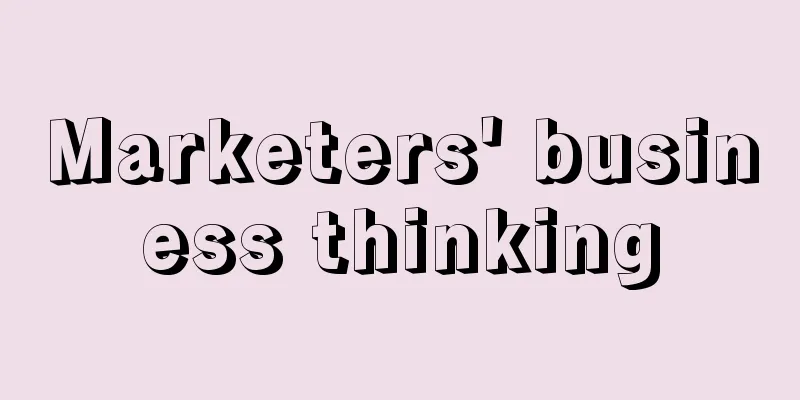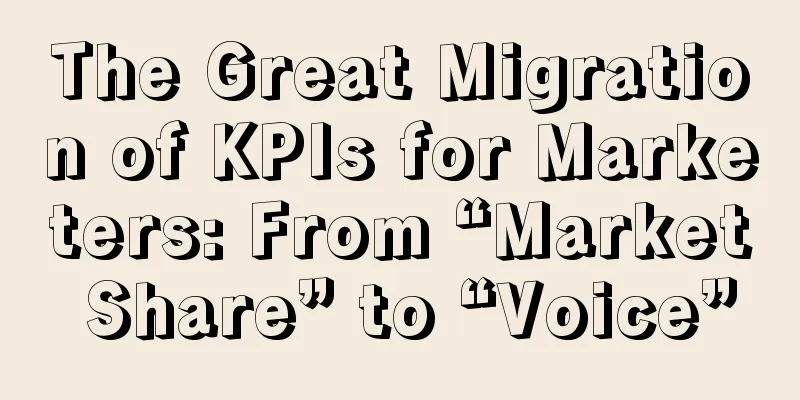A brief history of Chinese milk tea conquering Europe

"Tea is the tea that can be brewed and drunk after being picked and processed. The Chinese Empire has almost completely monopolized all aspects of the production and sales of this 'clear jade': planting, picking, processing, roasting and other processing methods, wholesale, export... everything is enjoyed exclusively by this country." In her book, Chinese Tea: How It Changed World History, American writer Sarah Rose described the key position of Chinese tea in the global trade chain in the 18th century. It not only changed the world's fashion, but also caused the British Empire's trade deficit to increase year after year. Later, the British found that they could use opium and force to reverse the trade balance that had always been in favor of China. After they put it into practice, the world pattern changed. More than three hundred years have passed, and now, Chinese milk tea, which adds various ingredients such as milk, cheese, pearls, coconut, etc. to the tea base, has once again started its journey to conquer the world. "There is a CoCo near Barcelona's luxury goods street, Avenida da Grazia. We always buy a cup when we go shopping and often have to wait in line for a long time." At the end of February this year, Xiaguang Society visited the famous Spanish city of Barcelona. Fiona, a foreign student living there, told us that the Chinese milk tea brand CoCo is very popular in Spain. CoCo store in Barcelona, Spain. Photo credit: Li Xiaotian Under Fiona's guidance, we visited the CoCo store near Thanksgiving Avenue. Unlike in China, where young consumers mainly drink milk tea, the foreign consumers queuing in this store came from all ages, including many elderly people with white hair. "Because Westerners, regardless of gender, age or status, all drink coffee, they understand milk tea as Chinese coffee, and they all want to try to understand why Chinese coffee is so much more expensive than European coffee," said Fiona. Xiaguangshe noticed that the price of a single Coco in Spain is between 5 and 7 euros (1 euro is about 7.55 yuan), which means that a cup costs more than 40 yuan, while the price of a latte in an ordinary coffee shop in Barcelona is about 2.5 euros. Chinese milk tea, which has traveled across the ocean, is more than twice as expensive as local coffee and has become a "luxury drink" in a foreign country. Spanish CoCo pricing. Photo credit: Li Xiaotian In fact, it is not only Spanish milk tea shops that are crowded with customers. Chinese milk tea has become popular in many European countries and cities. In 2017, Italian media ANSA published a report on Chinese milk tea on its website, "It took us Westerners seven years to discover this drink. Cheese tea, called zhì shì chá in Chinese, made its debut in the Chinese Taiwanese market as early as 2010, then came to Malaysia and Singapore, gradually expanded throughout Asia, and finally reached the United States and Europe." Xiaguangshe found that as of now, the #BubbleTea (pearl milk tea) hashtag has been viewed more than 6.7 billion times on Tiktok. Has Chinese milk tea taken over Europe? 1. The first wave of enthusiasm: it emerged out of nowhere and caused controversyThe originator of Chinese milk tea export to Europe is the milk tea brand BoBoQ founded by Taiwanese businessman Lai Mingjin in Germany. Lai Mingjin came to Germany to work and immigrated here with his relatives in 1984. Because he missed the pearl milk tea in his hometown so much, he came up with the idea of opening a milk tea shop in Germany. In 2005, Lai Mingjin returned to Taiwan to learn the milk tea making process. In 2010, he opened his first store in Berlin, Germany. At that time, the milk tea storm had not yet swept the world. Germans preferred strong drinks and were not very receptive to the relatively light Chinese milk tea. Lai Mingjin focused on the young consumer group aged 15-25, and ingeniously came up with a self-service DIY milk tea drinking method, using colorful and diverse small ingredients to attract young consumers. He also replaced the chewy and tough tapioca pearls with chewy and easy-to-suck jelly particles to adapt to the eating habits of German consumers. Lai Mingjin also tried to lower the proportion of traditional Taiwanese milk tea based on green tea and black tea, and increase the number of drinks based on milk, yogurt and fruit juice; in the process of making milk tea, he increased the ratio of sugar and ice to cater to the European habit of liking sweet and ice. The improved BoBoQ became a big hit in Berlin. By December 2012, BoBoQ had 106 franchise stores in Germany, the United Kingdom, the Netherlands, Austria, Spain, the Czech Republic, Poland, Israel and the United Arab Emirates. It is the No. 1 bubble tea restaurant chain in Europe and the largest bubble tea raw material supplier in Europe, providing 75% of the bubble tea supply chain demand in Europe. But the good times didn't last long. The "milk tea causes cancer" incident occurred. On August 22, 2012, Dr. Wolfgang Dott, director of the Institute of Hygiene and Environmental Medicine at RWTH Aachen University, said in a telephone interview with Deutsche Welle that the pearls in bubble tea contain carcinogens: "We were researching a new test method and using bubble tea as an experiment. We accidentally discovered that there were acetophenone, styrene and odorants in the milk tea. Although the content was not high, they are all carcinogens and should not be added." The "milk tea causes cancer" incident has intensified, and the German mainstream media has been scrambling to report on it. As a result, the number of milk tea shops in Germany has dropped by nearly 80%. In response, Lai Mingjin also refuted the claim that their products have problems in Deutsche Welle: "We have 6 flavors of pearls added to milk tea. We sent all 6 flavors to TÜV Rheinland and another inspection company called Sophia for inspection, and the results showed that there was no problem at all." After a long period of self-investigation and investigation, although the controversy was finally settled, the negative impact on the milk tea industry was irreversible. To this day, the controversy is still recorded on BoBoQ's official website: "Many media outlets spread this news without research, and these false news are still deeply rooted in many people's minds. This period was a very difficult time for all bubble tea lovers, especially for shops opened in various places. BoBoQ also had to close many shops at that time. In the end, founder Mr. Lai and his employees, business partners and store owners showed tenacity and perseverance and passed the severe test." Although the controversy has passed, reports on the unhealthiness of bubble tea are still often seen in European media. The founder of BoBoQ has become more low-key and cautious. He closed most of his offline stores and transformed himself into an upstream supplier of bubble tea. Therefore, although BoBoQ has been rooted in the European market for a long time, its popularity is not as good as that of later entrants. "The most well-known milk tea brands in Europe now are Luckin Coffee and Chatime, and they have the most stores. BoBoQ's brand awareness is not particularly high, and people who have heard of it tend to think of it as a milk tea supplier." Susan, who runs a chain of tea shops in Finland, told Xiaguangshe. It is worth noting that the self-service bubble tea mixing method pioneered by BoBoQ is still popular in Europe. When Xiaguangshe visited a milk tea shop in Barcelona, Spain, it found that the shop displayed colorful self-service small ingredients, and there were Middle Eastern women wearing headscarves among the customers. BoBoQ's early education on the European milk tea market can be said to have a far-reaching impact. Colorful pearls in a milk tea shop in Spain. Photo credit: Li Xiaotian 2. Popularity again: milk tea upgrades, overseas involutionIn the same year that BoBoQ was stigmatized, Heytea, which led Chinese milk tea into the "milk tea 3.0 era", was born in an alley in Jiangmen, Guangdong. Different from the 1.0 era of milk tea powder blending and the 2.0 era of chain street shops, the milk tea brands in the 3.0 era mainly use cold brew tea and ice drip tea extracted from natural high-quality tea leaves, breaking through the traditional concept of hot tea; adding fresh seasonal fruits, cheese milk cap and other ingredients; sales cover offline and online, stores are distributed in large commercial districts, and more attention is paid to the creation of brand IP. The cross-border collaboration between milk tea brands and other new consumer products is also a notable feature of the milk tea 3.0 era. Food analyst Zhu Danpeng told Xiaguang News Agency that the technical barriers between different brands of new tea drinks are not very different, and they need to continuously output a unique brand culture. New tea drink brands can better fit the interests of young consumers through collaboration. Since collaboration involves product and formula innovation, it also enables brand innovation and upgrading. For example, the joint cooperation between Heytea and the hit TV series "The Legend of Zhen Huan" and "Dream of Red Mansions" are classic marketing cases. Recently, Nayuki's Tea and the classic Chinese TV series "Wulin Wai Zhuan" launched joint peripheral products, making the white porcelain cups printed with "Tong Xiangyu" and "Bai Zhantang" hard to find and highly overpriced. Nayuki's Tea and "Wulin Wai Zhuan" co-branded tea cup Source: Nayuki's Tea official Weibo In May 2018, in a report focusing on China's new tea drinks, the British magazine The Economist described Heytea as a strong rival to Starbucks in China. "Heytea is creating a wave of foam cheese tea. Singapore is one of the candidate locations for its first overseas store. It may bring about the rebirth of the global tea industry." However, unlike Heytea's rapid development in China, it is extremely cautious in exploring overseas markets. In the eleven years since its establishment, Heytea has only opened 5 stores in Singapore, where there are many Chinese people. It was not until March 9, 2023 that Heytea announced the opening of business partner applications in multiple overseas cities, including the United States, the United Kingdom, Japan, Australia, and Southeast Asian countries such as Singapore, Thailand, Vietnam, Malaysia, Indonesia, and the Philippines. The caution of leading brands such as Heytea in going overseas has undoubtedly left a huge overseas market for second- and third-tier brands. In the new consumption wave, tea brands that have completed brand reshaping through raw material upgrades and product innovations have flocked to the European market with huge potential. In 2012, Chatime, a milk tea brand from Taiwan, opened its first offline store in London's SOHO district. As of 2020, Chatime has 26 stores in the UK, making it the milk tea brand with the largest number of stores in the UK. In July 2018, Chatime opened in the Louvre Square in Paris, France, becoming the third restaurant brand to enter the Louvre after Starbucks and McDonald's. Chatime stores in Europe. Image source: Chatime official website Other Taiwanese brands that have chosen the UK as their first stop in the European market include Happy Lemon, CoCo and Yifang. In 2014, Happy Lemon opened its first store in London and now has eight stores in major cities in the UK. In 2017, CoCo entered London and now has expanded its European stores to Paris, France, Barcelona and Madrid, Spain. Another leading brand, Luckin Coffee, has opened milk tea shops in Milan, Italy, in addition to opening stores in the UK, France and Germany. The reason why many tea brands choose London as their first stop for expanding into Europe is related to the long history of milk tea drinking in the UK. At the end of the 17th century, after defeating Spain, the emerging maritime power Britain began to fight with its former comrade, the Netherlands. At the same time, Britain began to learn from the Netherlands' advanced systems and living habits, one of which was milk tea. In 1946, the famous British writer George Orwell published his views on how to make a cup of English milk tea in a London magazine Evening Standard: "Whether to pour milk or tea into the cup first divides all British families into two factions." Milk tea brands are flocking to Europe, and the internal competition in overseas markets is becoming more and more intense, which has also caused product homogeneity to become more and more serious. Near the Arc de Triomphe in Barcelona alone, there are milk tea brands such as Here, which is comparable to Cha Yan Yue Se, Boba, which is comparable to Here, the domestic chain brand Xin Shi Qi, and Youcha, which is comparable to Nayuki Tea. Their signature products are basically "taro paste bubble milk tea". "In Europe, well-known milk tea brands such as Heytea, Lelecha and Yidiandian all have local copycat versions, and the taste is also good. It can only be said that the product research and development of milk tea are similar, and the difference is more in scale and brand." Anni, who runs a milk tea shop in Barcelona, told Xiaguangshe. The sign of a milk tea shop in Spain. Photo credit: Li Xiaotian 3. Overseas business tips: adapt to local conditions and pursue long-termismThe current popularity of Chinese milk tea in the European market is certainly worth celebrating, but controversial incidents like BoBoQ may not happen again. In June 2019, a report published in the French fashion magazine "Marie Claire" said that a 14-year-old girl obsessed with milk tea was admitted to the hospital due to severe stomach pain, and doctors found undigested "pearls" in her stomach. How can we make the milk tea craze in Europe not just a flash in the pan but a food culture deeply embedded in the daily life of Europeans? This is a question that every tea drinker going to Europe is thinking about. Eva, who runs a chain of milk tea brands in Finland, told Xiaguang News that when running a milk tea shop in Europe, it is important to first choose a city or region where Chinese people gather. "Because milk tea is definitely consumed more by Chinese or Asians who are deeply influenced by Chinese culture, we should first break through this group and then radiate to Europeans," said Eva. For example, in Finland, Eva observed that in addition to the Chinese, there are also many Vietnamese Asians. "Many Vietnamese came to Europe during the Vietnam War and settled down here. Now they have developed into second- and third-generation immigrants. They all love to drink milk tea, so I have several stores in the Vietnamese communities in Helsinki." Eva told Xiaguangshe that this was not her first time to start a business in the milk tea category. In 2012, she founded her own milk tea brand, but at that time, Chinese milk tea, which had not yet been reformed, was not well-known worldwide and was not well accepted by local people. In addition, the BoBoQ food safety incident was rampant at the time, and many Europeans were prejudiced against milk tea. "We did it for three years at that time, but it didn't work out, so we went into other industries. In 2020, milk tea became popular again, and many customers asked me if I wanted to continue making milk tea, so I wanted to give it another try." Therefore, food safety is the top priority for milk tea brands. Eva told the Xiaguang Club that many Europeans are vegetarians or allergic to dairy products, and they need to replace milk with oat milk, soy milk, or coconut milk according to their needs; some ingredients may be made of animal gelatin, which vegetarians cannot drink, so they can be recommended to replace them with tapioca flour tapioca pearls or red beans, which are all vegan ingredients. "Europeans pay more attention to health, so we need to provide consumers with multiple choices in terms of ice content, sugar content, ingredients, etc., so that they can customize a cup of milk tea that they think is healthier. In addition, the raw materials of milk tea shops are currently produced in Asia. Before signing a franchise agreement, it is best to ensure that the brand's raw material prices and supply volumes can remain stable during the contract period." said Eva. In addition to food safety and site selection, how to build brand awareness and recognition in a foreign country is also a key issue, which tests the localization ability of milk tea brands to adapt to local conditions. Eva told Xiaguangshe that although all European countries use English, when doing online marketing in each country, it is necessary to use well-known KOLs in the country to promote in the native language; in addition, in terms of store decoration, it is also necessary to adapt to the aesthetic preferences of the country. "For example, Finland is a Nordic 'cold and minimalist' style, and my store is mainly matched with blue and white." Using Chinese elements to create an exotic space is also a decoration style of European milk tea brands. For example, Yifang, a fruit tea brand with stores in the UK, France, and Sweden, uses nostalgic decorations from the early Republic of China combined with Japanese minimalist style to give consumers an immersive experience of being in the ancient East, and is also very popular in the European market. Yifang store image. Image source: Yifang official website The localization of flavors is also an issue that overseas brands need to pay attention to. A clerk at the CoCo store in Barcelona told Xiaguang that Europeans like highly sweetened drinks and basically order full sugar when ordering. In addition, due to the time difference between the development of the milk tea industry abroad and in China, Europeans prefer pearl milk tea. The new tea drinks of cold brew tea + fresh fruit pulp + milk cap that are popular in China now still need some market education in Europe. From this dimension, Chinese milk tea has undoubtedly become the leader and shaper of European and American tea flavors. In his book Sweetness and Power, the famous American anthropologist Westminster analyzed the power structure behind food culture. For society, every eating habit and taste preference has its historical reasons for formation, and this formation process is often decades or even hundreds of years long. Behind this long process is the game of political power, military power, economic interests and other forces, which eventually formed a food culture that is generally recognized by society. This food culture is both the result of the operation of economic, political, military and other powers, and the process of power generation and formation. Food connects people and the world, and thus opens the process of modern world history. With the growing international influence of China, Chinese food culture has also been widely spread and deeply rooted in Southeast Asia, Europe, North America, the Middle East and other places. The global milk tea is undoubtedly an example and epitome of this trend of the times. Author: Li Xiaotian Source: WeChat public account: "Xiaguangshe (ID: Globalinsights)" |
<<: The Internet wave ruthlessly crushes the "community grocery store"
>>: Marketing formula for social media operations in the tourism industry
Recommend
You may not know the benefits of building a personal brand IP?
Personal brand IP seems to be the most attractive ...
Top 10 Marketing Keywords in the First Half of 2023
The first half of 2023 has passed, and many market...
Is it safe to shop on Shopee? What should I pay attention to?
Shopee is a well-known cross-border e-commerce pla...
Internet giants are starting to grab new turf
During the Spring Festival holiday, the short play...
How to build a private domain team from 0-1?
Nowadays, more and more industries and companies a...
How to increase cross-border e-commerce sales? How to increase sales?
The first step for a novice to engage in cross-bor...
Where should I return my product to? Introduction to Shopify's refund policy
Merchants who open stores on Shopify independent s...
Is the work pressure at Wanyitong high? What are the benefits at Wanyitong?
Wanyitong is a leading global logistics and supply...
Jiyue anchors' "last broadcast": online job search, farewell dinner tomorrow, it's not just Mr. Xia's fault
Recently, Jiyue Automobile Co., Ltd. has encounter...
What are the payment risks of cross-border e-commerce? How to reduce the risks?
With the continuous development of global trade an...
Fun = Gold: How to Make Money from Brand Marketing in the Emotional Age
A few days ago, I attended the 2024 "Talk Abo...
100 Keyword Predictions for 2023 | Travel and Hotel (21-30): Qiwu B&B and Yuan Travel
WPP's brand Wunderman Intelligence released it...
Sam's Club needs to learn marketing from Hema, while Hema needs to learn supply chain from Sam's Club
"Competition" is no longer the only path...
How does Amazon view the ranking of US products? How important is it?
Now there are more and more merchants opening stor...
How to check Amazon's click-through rate? How to improve it?
On Amazon, the global e-commerce giant, the click-...

![Xiaohongshu Hot Article Secrets [April]](/upload/images/67e76a90340f4.webp)







